If you’re reading this website, you probably have an affinity for compulsory routines. Heck, if you’re like me, you might even want to learn these old routines.
Well, I have good news for you: I have the written text for the women’s compulsories at the 1966 World Championships in Dortmund.
Here ya go…
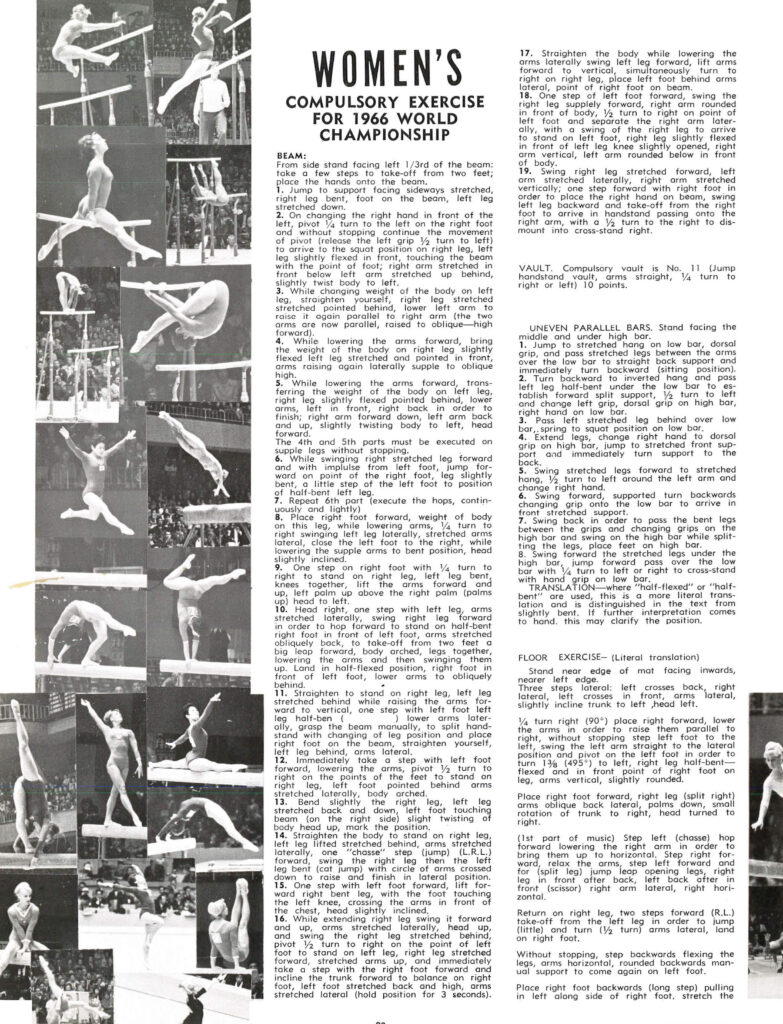
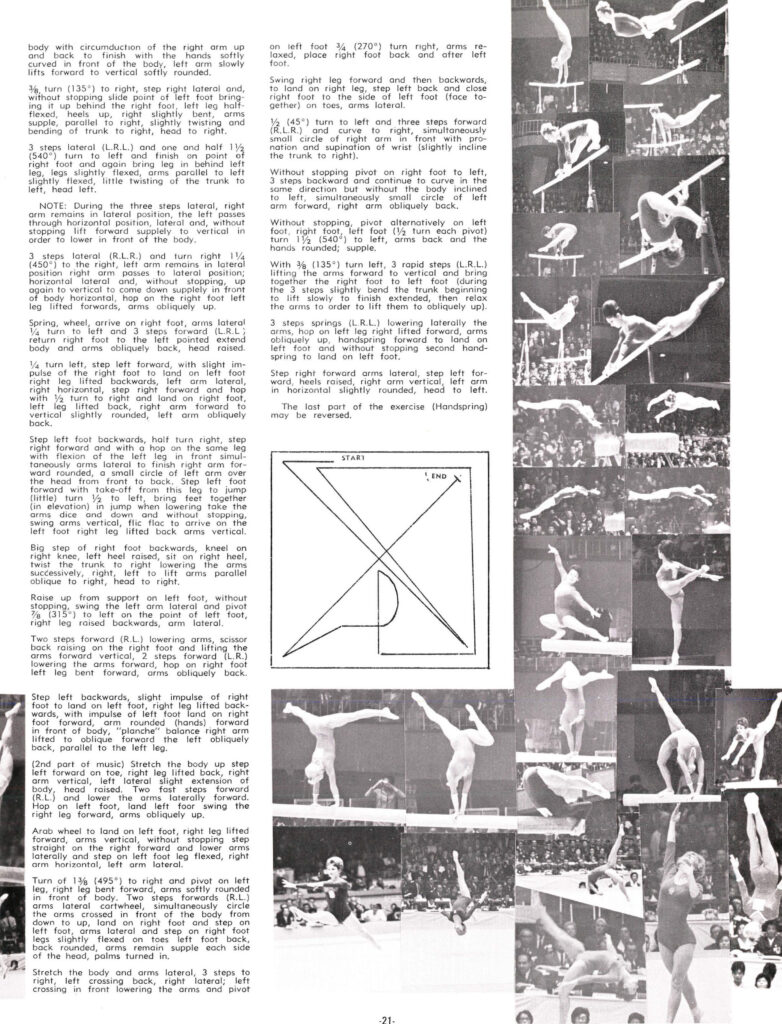
If you can read all those steps and immediately know what’s happening, you’re either lying to yourself or belong in Gym Nerd Mensa.
If you read all those steps and think, “WTF is happening?” you’re not alone.
Luckily, you can watch the compulsory routines at the beginning of this video:
Notice how the routines are slightly harder than the 1964 compulsories. A few examples:
- There’s a handspring with a ¼ turn (1966) instead of a handspring (1964) on vault
- There’s now a sequence of handspring stepouts (1966) in combination rather than a solitary handspring stepout on floor (1964)
Scoring Compulsories
What you can’t see in the video is how complicated the judging was. Here are the official rules from the 1964 Code of Points:
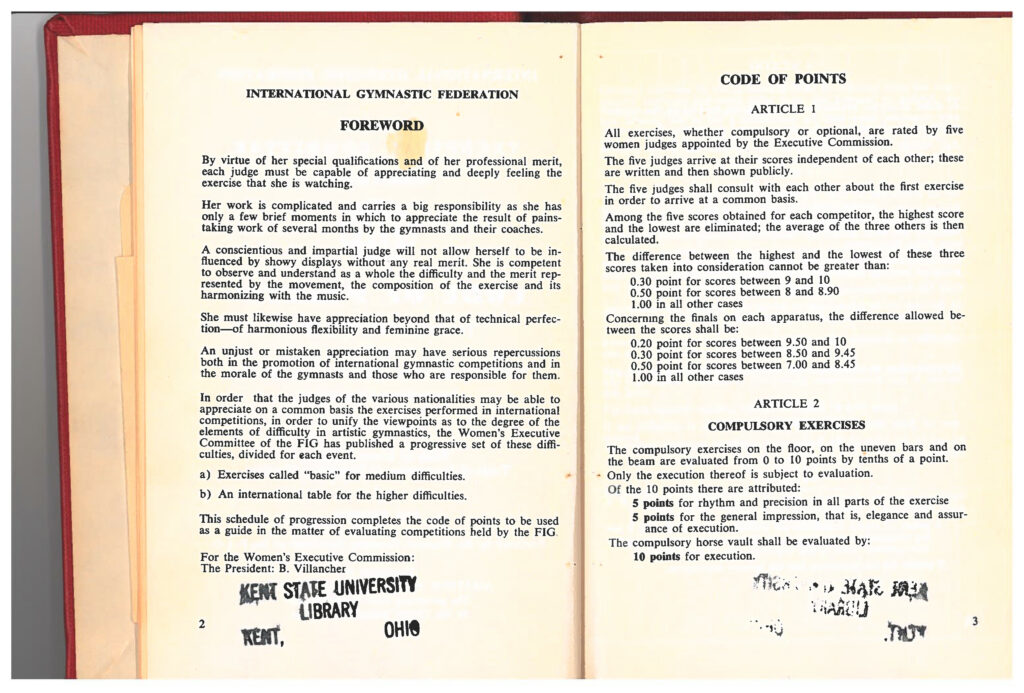
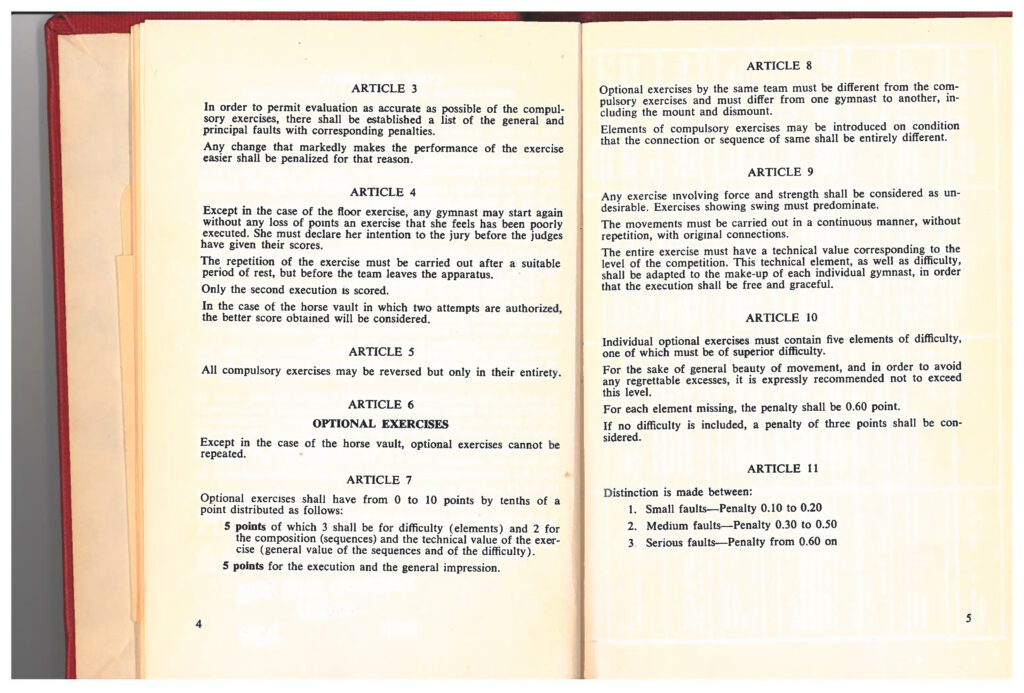
They seem simple, right?
Wrong.
Article 3 offers a lot of latitude:
In order to permit evaluation as accurate as possible of the compulsory exercises, there shall be established a list of the general and principal faults with corresponding penalties.
Any change that markedly makes the performance of the exercise easier shall be penalized for that reason.
According to Alena Tinterova, a judge from Czechoslovakia, here’s how those penalties were determined.
- The routine was divided into sections, each including one or more elements and connecting movements
- Based on the difficulty of the elements and the connections, each section was assigned a certain number of points
- When you missed an element
- There was a deduction that was equal to the number of points established for that element
- If the omitted element “facilitates” the exercise, the deduction can be increased by 0.5.
- When you added an element
- 0.3 to 0.5 was deducted for each added element
- If the added element “facilitated” the exercise (e.g. extra swings), the deduction could amount to 0.4 to 1.0.
- When you changed/altered an element
- The deduction was ⅓ to ¾ of the point value assigned to that element
Source: Mademoiselle Gymnast, May/June 1967
More on Point Assignments
I couldn’t find an example of the women’s compulsories being broken into parts with point assignments. But you can see an example for the men’s floor here:
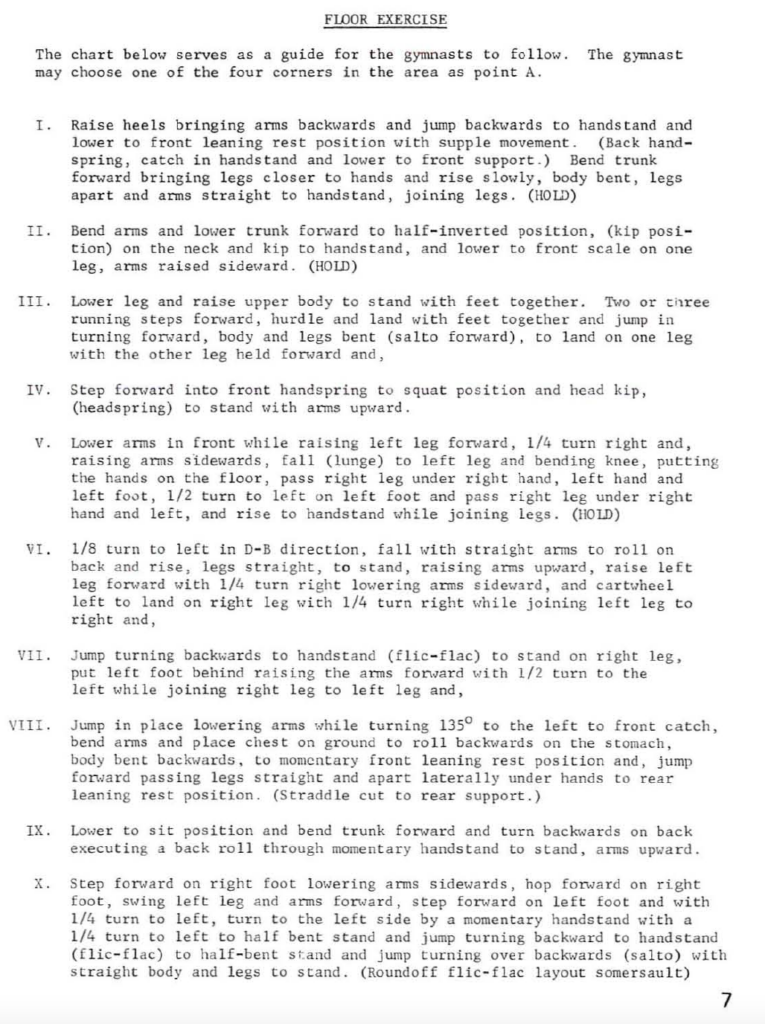

Example: The final pass was a round-off, back handspring, back layout. That section of the routine (i.e. section “X” in the second image) was worth 1.80 points. If you left out that entire pass, you should receive a 1.80 deduction, meaning your best score would be an 8.20.
Yeah… it was complicated. Thankfully, the women’s compulsory scoring would be simplified in the 1968 Code of Points.
Repeating Compulsories
Oh, and one more thing: the gymnasts could repeat compulsories in 1966.
- Specifically, they could repeat their compulsory routines on beam and bars. They had to ask the master judge before the score was given.
- Gymnasts got two vaults
- Floor could not be repeated
In my next post, we’ll take a look at what was discussed during the 1966 technical committee meeting in Dortmund. Stay tuned!